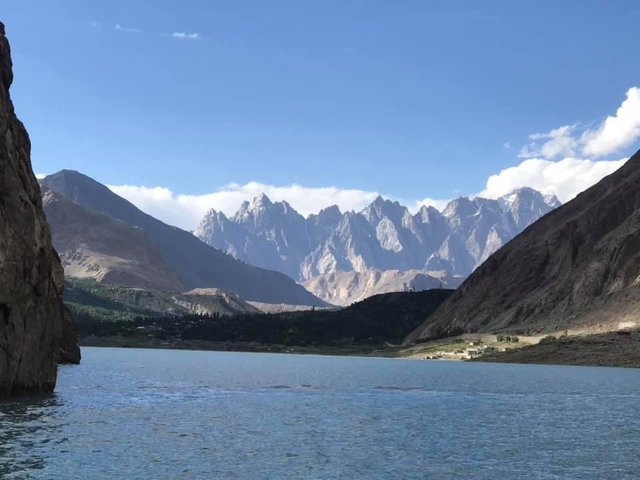Atta Abad Lake Hunza Pakistan

ON JANUARY 4, 2010, A massive landslide thundered down the sides of the remote Hunza Valley in the Gilgit Baltistan Region of Northern Pakistan. The village of Attabad was buried, killing 20 people and destroying 26 homes. The disaster, however, was far from over. The landslide had dammed the Hunza River, and the rapidly rising waters of the newly formed lake threatened villages both below and above the dam.
The waters behind the newly formed natural dam soon rose to a depth of more than 300 feet, creating a lake that eventually measured 13 miles in length. As the lake grew, it displaced some 6,000 people from upstream villages and flooded a 12-mile stretch of the Karakoram Highway, leaving the region stranded.
In May 2010, local authorities excavated a spillway to guide the flow over the dam. A month later, however, too much water was flowing over the landslide. Below the dam, lower Shishkat was completely submerged and Gulmit partly flooded.
By August 2010, the spillway was beginning to perform well. But by that time, as many as 25,000 individuals had been affected, either as a result of the initial landslide, the flooding, or due to the destruction of the highway. The government provided aid to the victims, but many remained in fear of further disaster. If the dam burst, 50,000 people living downstream could be in peril, as well as a road that served as an important trade link with China
Thankfully, the dam held. And from the disaster came an unexpected attraction that would eventually lead to a tourism boom in the area: Attabad Lake, a shimmering turquoise lake that is now one of the main attractions in the Gilgit-Baltistan region of Pakistan.
The lake’s chilly waters are a stunning turquoise in spring and early summer, when meltwater from the surrounding mountains deposits glacial silt into the lake. In winter, the lake typically freezes over.
Most visitors come to enjoy this spectacular landscape when the lake is ice-free. Various recreational activities take place on and around the lake, including boating, jet skiing, and fishing. And with the rise in tourism, an increasing number of hotels and guesthouses have sprung up around the lake, as well as a handful of campsites.
Presumably, the influx of tourists has benefited many of the locals who were affected by the landslide. And now that the highway has been rebuilt with new tunnels, access is better than it was before. Still, if you take a boat out onto the calm surface of Attabad Lake, it’s strange to think that 300 meters below you sits a once-lively village.
Hi @artline,
The TravelFeed.io team manually reviewed your post and we have found a copyright violation in your post.
Since it violates our policies, your post has been removed from TravelFeed.io.
To learn more about our policies, you may check them out here. Please contact us through our Discord if you wish to appeal.